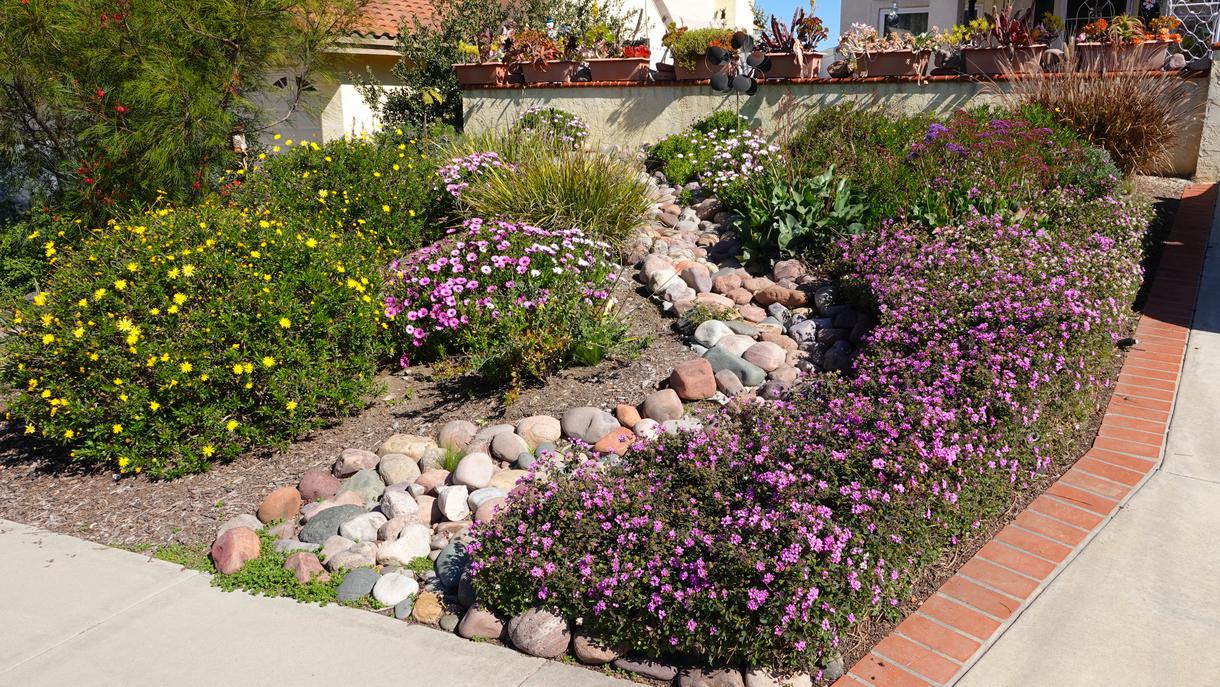When designing a landscape, many homeowners focus on aesthetic appeal, choosing exotic flowers and ornamental plants. However, native plants—species that naturally occur in a particular region—offer significant benefits beyond beauty.
By incorporating native plants into your landscape, you can:
- Support local wildlife and pollinators
- Reduce maintenance and water usage
- Enhance soil health and prevent erosion
- Increase resilience to pests and diseases
In this blog, we’ll explore why native plants are essential for sustainable landscapes and how you can integrate them into your garden effectively.
1. What Are Native Plants?
Native plants are species that have evolved in a specific geographic area over thousands of years, adapting to the local climate, soil, and wildlife.
Characteristics of Native Plants:
- Require less water and fertilizer than non-native plants
- Provide habitat and food for local pollinators, birds, and insects
- Resist local pests and diseases naturally
- Promote biodiversity and ecological balance
Example:
- The Black-Eyed Susan (Rudbeckia hirta) is native to North America and thrives in full sun with minimal care, making it a perfect low-maintenance addition.
By contrast, invasive species—like Japanese Honeysuckle—can spread aggressively, outcompeting native plants and disrupting ecosystems.
2. Environmental Benefits of Native Plants
1. Supporting Pollinators & Wildlife
Native plants provide nectar, pollen, and seeds that sustain local species such as:
- Butterflies (e.g., Monarch butterflies rely on milkweed to lay eggs)
- Bees (native wildflowers like Coneflowers and Bee Balm support honeybees)
- Birds (Oak trees provide acorns for woodpeckers and blue jays)
Fact: Pollinators contribute to 75% of flowering plant reproduction, and native plants play a key role in their survival.
2. Water Conservation
Unlike exotic plants that require frequent watering, native species:
- Have deep roots that store water efficiently
- Adapt to drought conditions naturally
- Reduce the need for irrigation, lowering water bills
Example:
A California Poppy (Eschscholzia californica) thrives in dry conditions with little to no watering, unlike water-intensive ornamental flowers.
3. Preventing Soil Erosion
Native plants have extensive root systems that:
- Hold soil in place, preventing erosion and landslides
- Improve soil structure, reducing compaction
- Enhance drainage and reduce flooding risks
Example:
Switchgrass (Panicum virgatum) stabilizes riverbanks and steep slopes, preventing soil erosion while adding texture to the landscape.
3. Economic Benefits: Saving Money & Reducing Maintenance
A native plant garden requires:
- Less fertilizer → Nutrient-efficient plants thrive without chemical inputs
- Fewer pesticides → Native species naturally resist pests and diseases
- Minimal watering → Lower irrigation costs and eco-friendly maintenance
Cost Comparison: Native vs. Exotic Plants
| Factor | Native Plants | Exotic Plants |
| Watering Needs | Low | High |
| Fertilizer Use | Minimal | Frequent |
| Pest Resistance | High | Low |
| Maintenance | Low | High |
| Wildlife Benefits | Excellent | Limited |
Fact: Homeowners save up to 60% on water bills by switching to native landscaping.
4. How to Incorporate Native Plants into Your Landscape
1. Assess Your Site Conditions
Before selecting plants, consider:
- Soil type (sandy, loamy, clay)
- Sunlight exposure (full sun, partial shade, full shade)
- Water availability (drought-prone vs. moist areas)
2. Select Native Plants That Suit Your Needs
Low-Maintenance Native Plants for Landscaping
| Purpose | Best Native Plants |
| Drought Tolerance | Purple Coneflower, Yarrow, Blanket Flower |
| Pollinator Attraction | Milkweed, Bee Balm, Black-Eyed Susan |
| Ground Cover | Wild Ginger, Creeping Phlox, Prairie Dropseed |
| Shade Gardens | Wild Columbine, Foamflower, Virginia Bluebells |
3. Design with Layers for a Natural Look
To create a visually appealing native landscape:
- Use tall plants (e.g., Oaks, Maples) as a backdrop
- Add mid-sized shrubs (e.g., Elderberry, Wild Hydrangea) for structure
- Include low-growing wildflowers (e.g., Asters, Coreopsis) for ground cover
Tip: Plant in clusters rather than single specimens—this mimics nature and enhances visual impact.
5. Common Myths About Native Plants (Debunked!)
Myth 1: Native Plants Look Messy
Truth: Proper design and grouping create a beautiful, intentional landscape.
Myth 2: They Only Attract Bugs
Truth: They attract beneficial pollinators like butterflies and hummingbirds, not harmful pests.
Myth 3: They Take Too Long to Establish
Truth: Many native plants grow just as fast as exotic species once adapted.
Conclusion: The Smart Choice for Sustainable Landscaping
By incorporating native plants, you:
- Support local wildlife and pollinators
- Reduce water and maintenance costs
- Improve soil health and prevent erosion
- Create a beautiful, eco-friendly landscape
Ready to design your sustainable garden?
Let Customscape.ai help you choose the best native plants for your landscape, customized to your property and climate!

